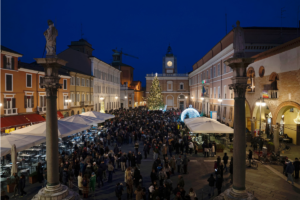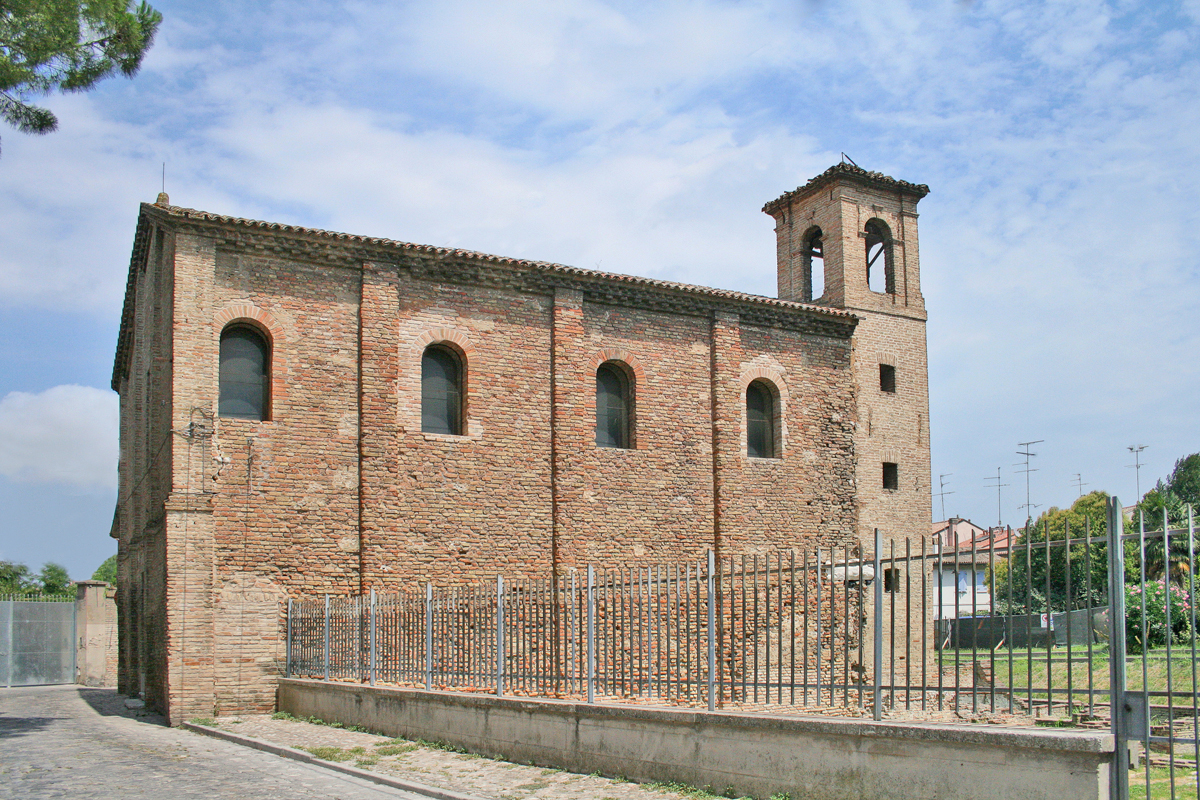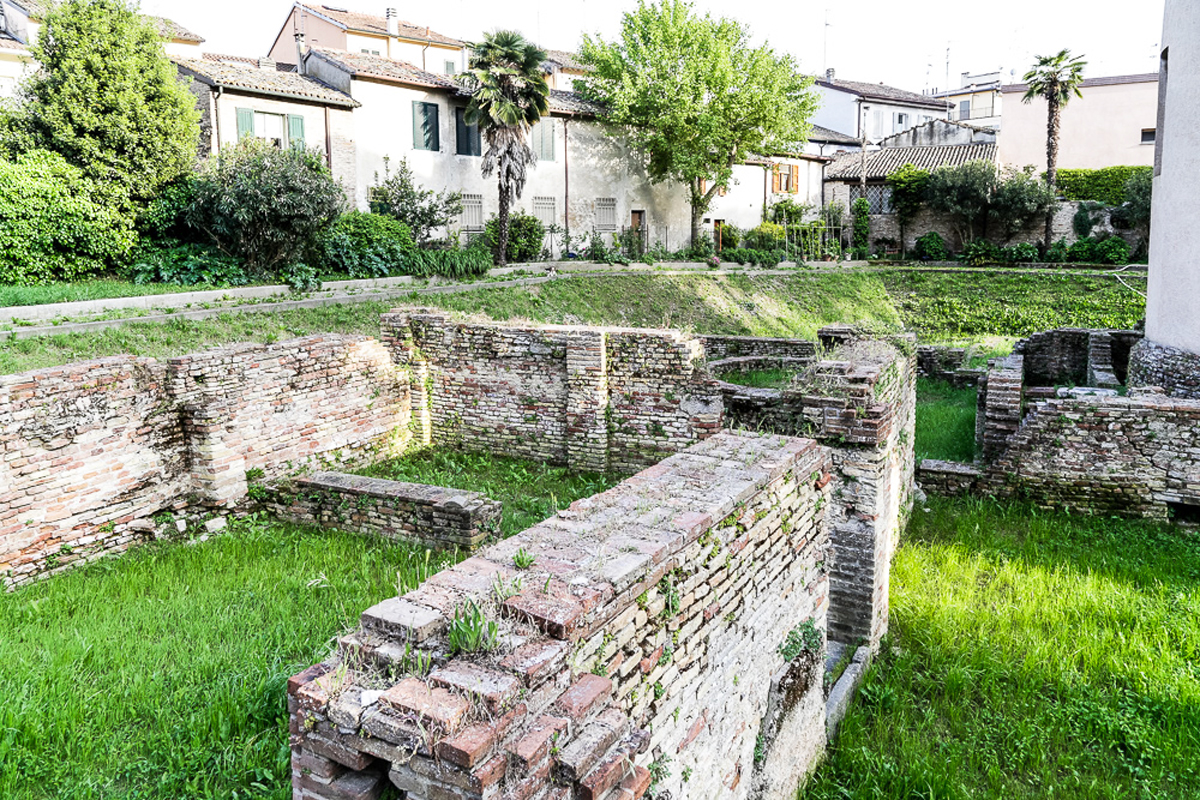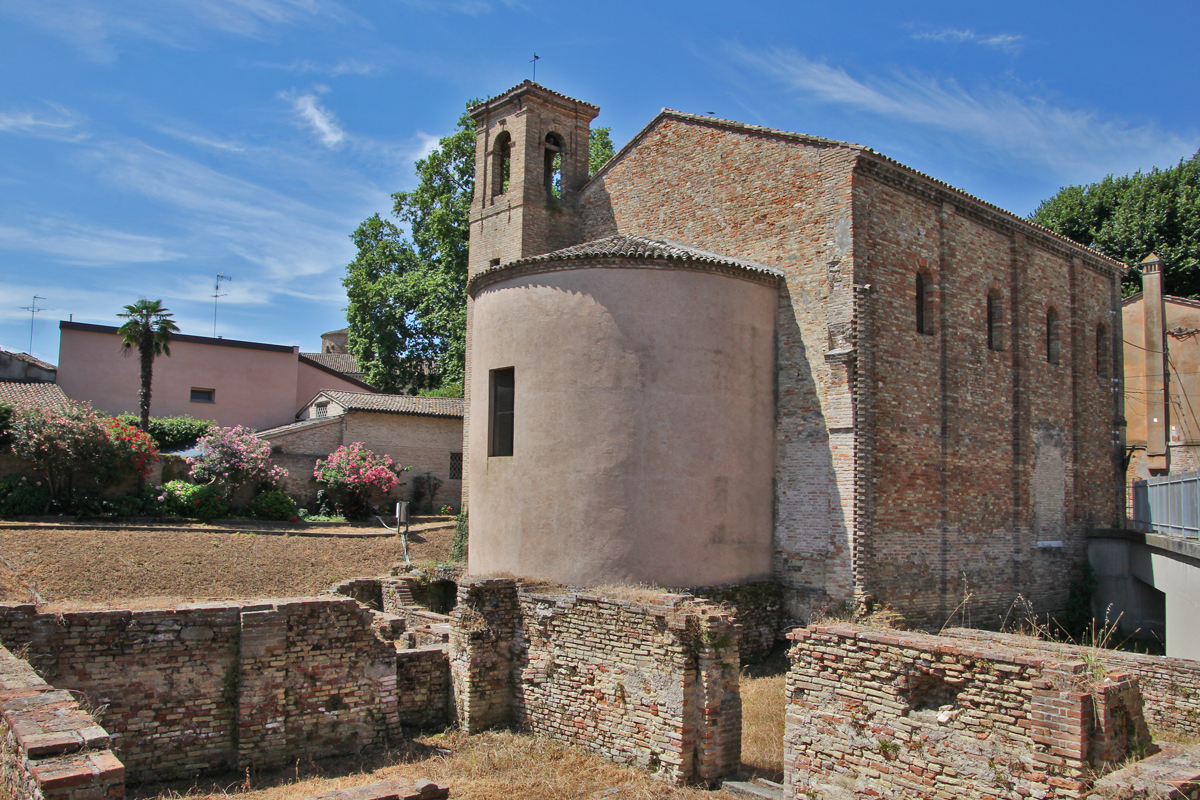In the area of the San Vitale complex, just behind the Mausoleum of Galla Placidia, in one of the most charming areas of the historical centre, is the deconsecrated CHURCH OF SANTA CROCE.
Despite the external architecture seems to be of little value, various research studies have confirmed the importance of this building.
Thank to archaeology, it was possible to better understand the renovation of this part of the city following the relocation of the capital city of the Roman Empire, from Milan to Ravenna (402-403 AD).
The history of the complex
In the first half of the 5th century AD, at the behest of Empress Galla Placidia, the building was built on top of an abandoned Roman domus (whose remains are still visible in the area). It is a three-nave building preceded by an extended narthex.
At its ends, there were two symmetrical chapels dedicated to the veneration of the saints, that formed a cruciform plan with the church.
Today, the only remaining chapel is the so-called Mausoleum of Galla Placidia, that was probably dedicated to Saint Lawrence, as showed by the wall mosaic on the inside.
The church was probably adorned by rich decorations, which have almost disappeared today (polychrome marbles, wall mosaics and stuccoes) – similar in splendour to the nearby mausoleum.
Over the centuries, the Church of Santa Croce was used and renovated in many different ways.
Today, it is only possible to see the 15th-century apse, the 17th-century austere facade and the 18-th century bell tower.
At the beginning of the 17th century, the frontal part of the building was finally reduced and separated from the Mausoleum of Galla Placidia, in order to make room for the road that it overlooks (Via Galla Placidia).










